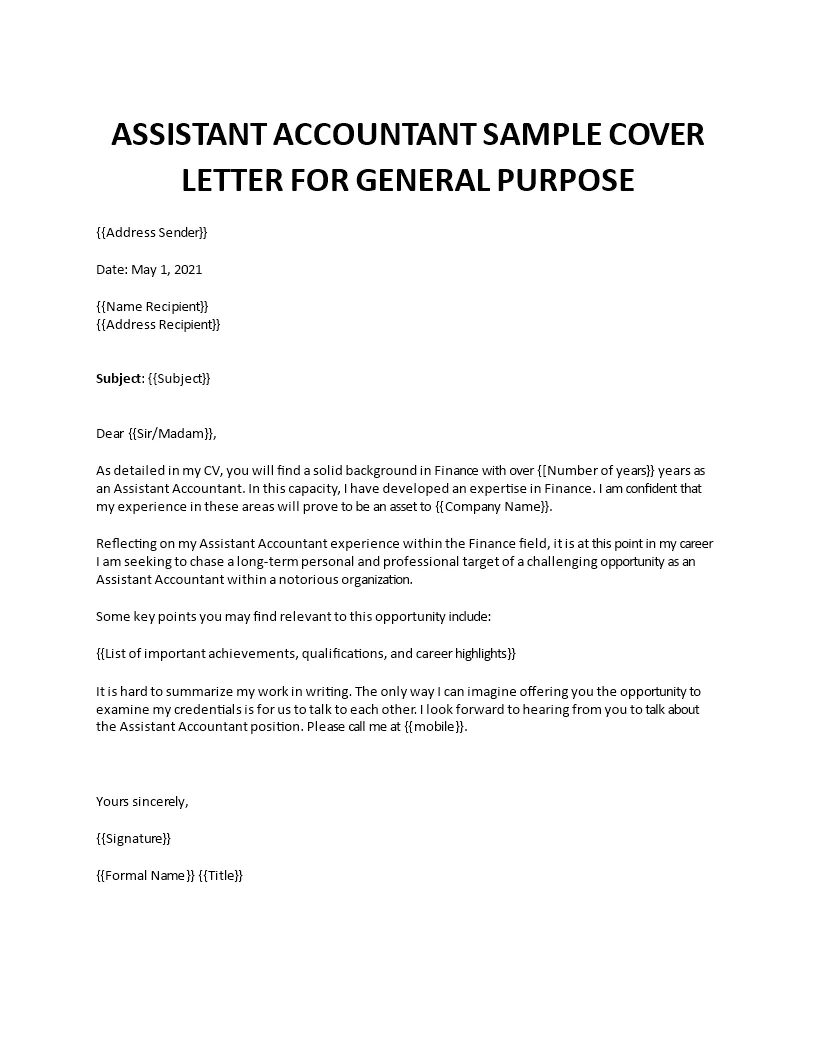What is an Accounts Assistant Cover Letter?
An Accounts Assistant cover letter is a crucial document that accompanies your resume when applying for an Accounts Assistant position. Its primary purpose is to introduce yourself to the hiring manager, express your interest in the specific role, and highlight your relevant skills and experience. Unlike a resume, which provides a factual overview of your qualifications, a cover letter allows you to showcase your personality, enthusiasm, and writing abilities. It’s your opportunity to make a strong first impression and persuade the employer to consider you for an interview. Think of it as a personal sales pitch, designed to convince the reader that you are the ideal candidate for the job.
Key Components of an Effective Accounts Assistant Cover Letter
A well-structured and compelling cover letter includes several essential components. Each element plays a vital role in conveying your suitability for the role and capturing the reader’s attention. Let’s break down these key parts to ensure you craft a cover letter that stands out from the competition and increases your chances of landing an interview. A good cover letter needs to be complete, so every section below is very important for your application to be a success.
Contact Information
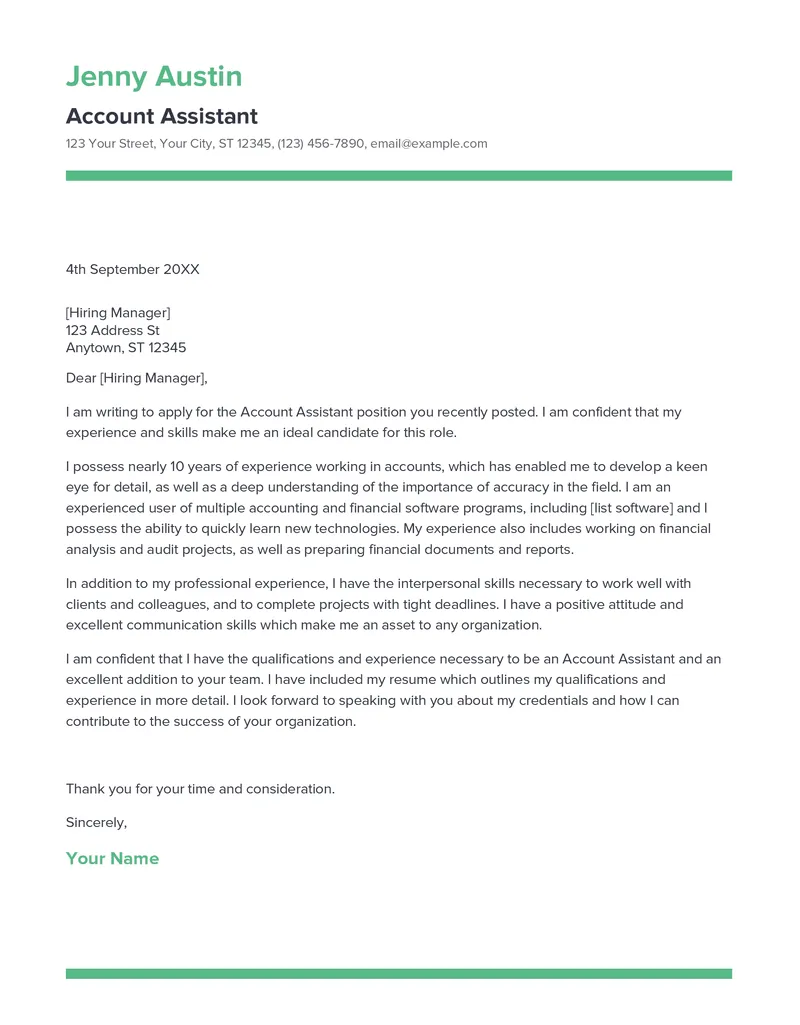
Begin your cover letter with your contact information at the top. This includes your full name, phone number, email address, and LinkedIn profile URL (optional). Ensure your contact details are accurate and professional, as this is how the employer will reach you. Place this information on the left or right side of the document. Consider using a slightly smaller font size for your contact details.
Date
Below your contact information, include the date you are writing the letter. This shows the employer that your application is current. The date should be formatted correctly, typically with the month, day, and year.
Employer’s Details
Next, include the employer’s details. This typically includes the hiring manager’s name (if known), their title, the company name, and the company’s address. If you cannot find the hiring manager’s name, use the title or ‘Hiring Manager’ instead. Addressing the letter to a specific person adds a personal touch and demonstrates that you’ve taken the time to research the company.
Salutation

Start your letter with a professional salutation. Use ‘Dear Mr./Ms./Mx. [Last Name]’ if you know the hiring manager’s name. If the name is unavailable, use ‘Dear Hiring Manager’ or ‘Dear [Company Name] Team’. Avoid generic greetings like ‘To Whom It May Concern’ as they are impersonal. Ensure the salutation matches the tone and formality of the company.
Crafting the Perfect Opening Paragraph
Your opening paragraph is your first chance to grab the reader’s attention. It should be concise, enthusiastic, and clearly state the position you are applying for and where you saw the job posting. Briefly mention why you are interested in the role or the company. Highlight something specific that caught your eye in the job description. This sets the tone for the rest of your letter and shows your genuine interest.
Expressing Your Interest and Enthusiasm
Throughout your cover letter, demonstrate your genuine interest in the Accounts Assistant role. Explain why you are drawn to this specific position and the company. Show that you have researched the company’s values, mission, and recent achievements. Express your enthusiasm for the opportunity to contribute to the team and make a positive impact.
Highlighting Relevant Skills and Experience
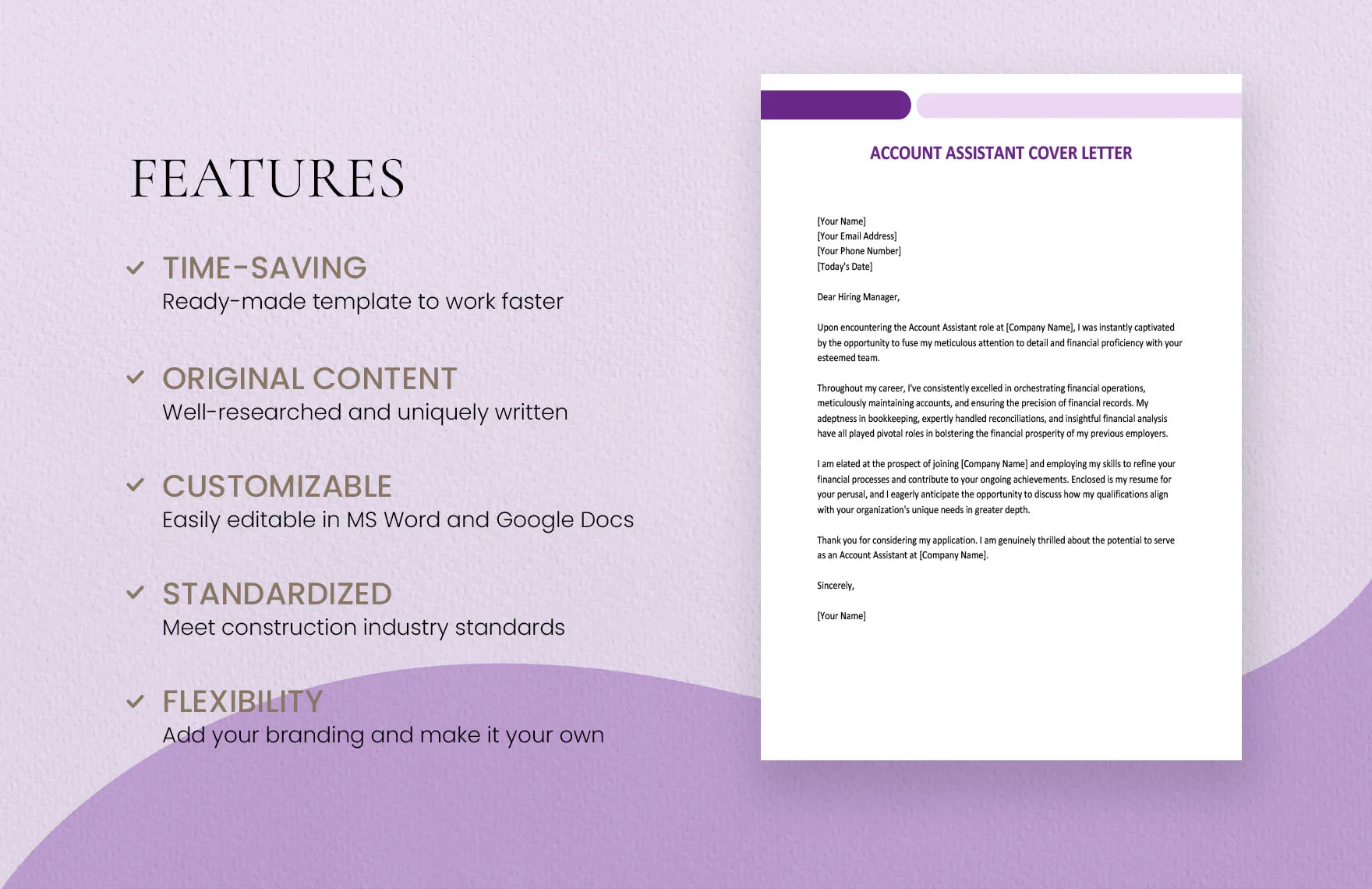
The core of your cover letter should focus on highlighting your relevant skills and experience. Carefully review the job description and identify the key requirements and keywords. Then, provide specific examples from your past roles to illustrate how your skills match the employer’s needs. Use action verbs to describe your accomplishments and quantify your achievements whenever possible. Focus on the skills that are most relevant to the Accounts Assistant role, such as bookkeeping, data entry, reconciliation, and financial reporting. This is the most crucial part.
Mentioning Specific Achievements
Instead of just listing your responsibilities, showcase your achievements. Provide concrete examples of how you have successfully managed tasks, solved problems, or improved processes in previous roles. Mention specific projects you worked on, targets you met, or improvements you implemented. Focus on outcomes and results to demonstrate your value to the employer.
Quantifying Accomplishments
Whenever possible, quantify your accomplishments to make them more impactful. Use numbers, percentages, or specific data to illustrate your achievements. For example, instead of saying ‘Improved efficiency,’ say ‘Improved invoice processing efficiency by 15%.’ Quantifying your accomplishments adds credibility and demonstrates your ability to deliver results. Make sure you have this section in your cover letter.
Tailoring the Letter to the Job Description
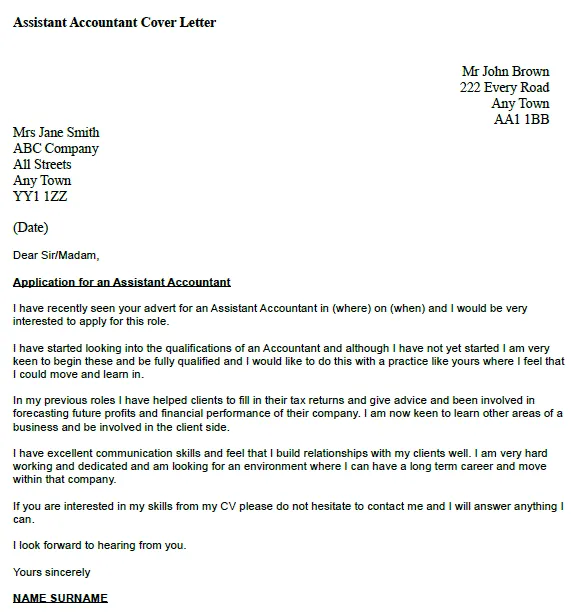
Customize your cover letter for each job application. Carefully read the job description and tailor your letter to match the specific requirements and keywords. Highlight the skills and experiences that are most relevant to the role. Avoid using a generic cover letter; instead, show the employer that you understand their needs and are a good fit for the position. This is a key point and it is also the most common mistake.
Demonstrating Your Understanding of the Role
Show that you understand the responsibilities of an Accounts Assistant. Briefly explain how your skills align with the day-to-day tasks and challenges of the role. Demonstrate your familiarity with relevant accounting principles, software, and industry practices. Mention any specific projects or tasks you are looking forward to contributing to, which proves your interest and your willingness to go forward with the company. This section is important for showing them you are a professional.
Showcasing Relevant Software Proficiency
Accounts Assistants frequently use accounting software, such as QuickBooks, Xero, or SAP. Mention any software you are proficient in, along with your level of experience. Include any other relevant software skills, such as Microsoft Excel, to further strengthen your application. List all software that you know that match the job description. If you are unsure, then research and learn the software. This will improve your chances significantly.
Formatting and Presentation

The format and presentation of your cover letter are just as important as its content. Use a professional font, such as Times New Roman, Arial, or Calibri, and ensure that the font size is easy to read (11 or 12 points). Use single spacing within paragraphs and add a blank line between paragraphs. Maintain consistent margins and alignment throughout the document. A well-formatted cover letter demonstrates attention to detail and professionalism.
Professional Font and Readability
Choose a font that is easy to read and looks professional. Avoid using overly decorative or unusual fonts. Stick to standard fonts such as Times New Roman, Arial, or Calibri. Ensure your font size is between 11 and 12 points to maintain readability. Use clear spacing and formatting to make your letter easy to scan and digest.
Concise and Engaging Language
Use concise and engaging language throughout your cover letter. Avoid long, complex sentences and jargon. Get straight to the point and focus on conveying your key qualifications and experiences. Use action verbs to create a dynamic and compelling narrative. Proofread your letter carefully to eliminate any grammatical errors or typos that could detract from your message.
Proofreading and Editing
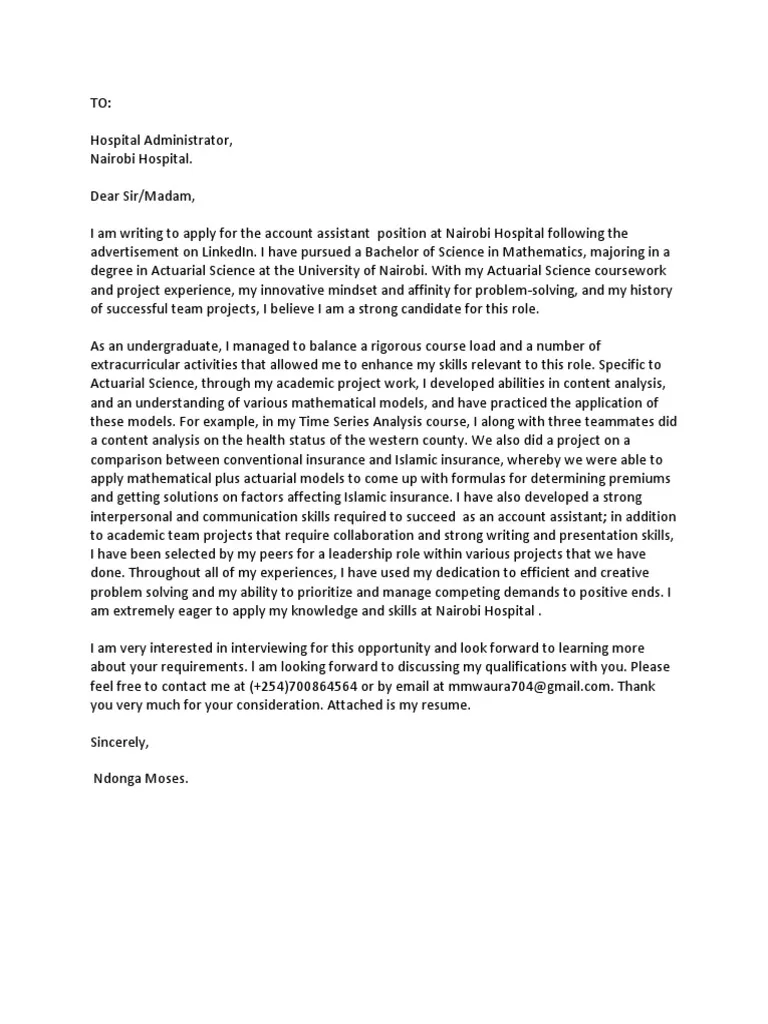
Before submitting your cover letter, proofread it carefully for any errors in grammar, spelling, or punctuation. Ensure that your sentences are clear and concise. Ask a friend or colleague to review your letter for any mistakes you might have missed. A polished and error-free cover letter demonstrates your attention to detail and professionalism.
Call to Action
In your closing paragraph, include a clear call to action. Express your enthusiasm for an interview and your willingness to discuss your qualifications further. Provide your contact information again, and make it easy for the employer to reach you. This demonstrates your proactive approach and reinforces your interest in the position.
Expressing Your Availability
Indicate your availability for an interview. State that you are available to meet at their earliest convenience or that you are flexible. Make it easy for the employer to envision the next steps in the hiring process. Be sure to provide your contact information for easy contact.
Thanking the Employer
Thank the employer for their time and consideration. Express your appreciation for the opportunity to apply for the position. This shows your courtesy and professionalism. A simple thank you note is very important.
Closing and Signature
End your cover letter with a professional closing, such as ‘Sincerely’ or ‘Best regards’. Sign your letter if you are submitting a physical copy. For an electronic submission, you can simply type your name. Make sure your signature is professional and represents you well.
